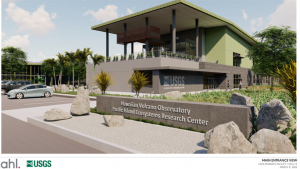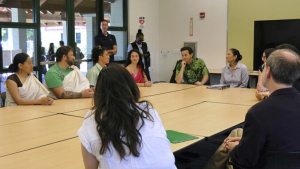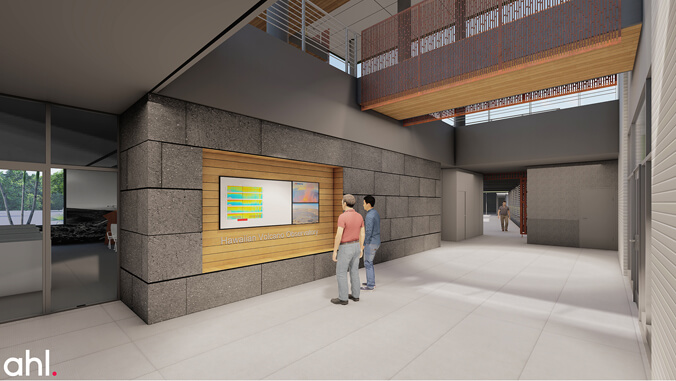To prepare ground for a new U.S Geological Survey (USGS) facility that will monitor volcanoes and support conservation science, U.S. Secretary of the Interior Deb Haaland attended a ground blessing and visited with University of Hawaiʻi at Hilo students on June 28. U.S. Senator Brian Schatz and USGS Director David Applegate also attended.
The facility, which will be located on the UH Hilo campus, will house the USGS Hawaiian Volcano Observatory and the USGS Pacific Island Ecosystems Research Center.

“We selected this location because of its unique qualities and partnership opportunities,” Applegate said. “One quality in particular that is critical to our future success is access to a very precious resource: students who can become our next-generation workforce, helping bring science to bear on some of the most challenging issues facing our nation and the planet.”
The ceremony, called a kīpaepae, was coordinated by UH personnel. The kīpaepae included USGS and university staff and students, and focused on coming together in the new location.
“UH Hilo has a long and rewarding relationship with the Hawaiian Volcano Observatory and Pacific Island Ecosystems Research Center, and I am excited for the additional opportunities their presence on campus will have for research partnerships and student internships,” said UH Hilo Chancellor Bonnie D. Irwin. “Working side-by-side with professionals in the field is an invaluable complement to the education students receive at our university.”

The Hawaiian Volcano Observatory monitors and assesses hazards from active volcanoes and earthquakes in Hawaiʻi, providing important science for emergency managers, scientists and local communities. The observatory was previously located in Hawaiʻi Volcanoes National Park, near the active volcanoes of Kīlauea, Mauna Loa, Lōʻihi and Hualālai. The observatory’s previous facility was irreparably damaged during the 2018 Kīlauea eruption.
The USGS Pacific Island Ecosystems Research Center conducts research to support management and conservation of biological resources in Hawaiʻi and other Pacific locations. This includes scientific studies of imperiled species, invasive species and plant diseases such as Rapid ‘Ōhi‘a Death.
“Partnership and collaboration are at the heart of everything we do. I’m so excited about the collaborations that will be formed in this facility between USGS scientists and personnel, the brilliant faculty and the students who have already accomplished so much,” said Haaland. “As we celebrate this facility today, we celebrate the enduring relationship it represents for the Department of the Interior and the community at large, as well as the benefits this partnership will bring long after our time doing this important work is done.”
Construction of the facility is estimated to be completed in late 2025.


